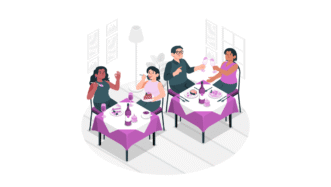LESSON OVERVIEW
The main objectives of this lesson are to:
- engage in speaking about art and activism;
- watch a video about an art exhibition;
- share opinions on different forms of art and their meanings.
With this lesson, students think of concepts related to art and talk about different kinds of art and their interest in them (e.g. photos and videos, installation art, sculpture). They watch a video about a public art installation highlighting climate change, give their opinions about the exhibition and discuss comments about artivism. Students can also do an optional activity to review useful phrases to talk about art (e.g. make a difference, support causes, have an impact).
B2 / Upper Intermediate45 min
60 minSpeaking ClassUnlimited Plan
This is a Speaking Class worksheet. It includes a variety of tasks that let your students practise their speaking skills. This lesson format does not focus on grammar or vocabulary. Learn more about it here.
WARM-UP AND VIDEO
This lesson starts with a warm-up. Students look at words (escape, emotion, fun and history) and say how they might be connected to art. Before speaking about art and activism, students can do an optional vocabulary activity. In the task, they choose the correct verbs to complete statements about how art influences society and put them in the correct form. After that, students discuss questions about different forms of art and their meaning. Next, they watch a video about an art exhibition. First, students read information about it and discuss what the exhibition might look like. Then, they watch the video and compare their answers. Following that, students complete statements about the exhibition with their own opinion.
DISCUSSION
At this point in this lesson, students learn the definition of artivism and read comments about it (e.g. Social change is always about politics and art should stay neutral to political issues.). They engage in speaking about art and activism and discuss if they agree or disagree with some of the opinions. Afterwards, students read about other examples of artivism and discuss questions about artivism and its impact on social causes. Finally, they read statements (e.g. It could be good for artivism.) and say which ones they think are true or untrue about different mediums (memes, TikTok videos and AI-generated content). Students also explain their answers and give examples if possible.
WORKSHEETS
Subscribe to unlock these and many other Standalone lesson lesson plans with the Unlimited plan
Subscribe











This lesson worked very well with group. Thank you
That’s great! Thanks for the feedback 🙂
Inspirational lesson and topic. It raises very interesting questions. I would rather classify it as B2-C1 because expressing abstract thoughts is much more difficult than using everyday English.
Thanks for the comment! We’re happy you like the topic of the lesson! Actually, as the lesson is our Speaking Class, I think it can be also easily adapted and done with higher-level groups who might have even more interesting discussion 🙂
Do you (or does anyone) have a link to the video that isn’t restricted in Australia by chance?
Hello,
There’s an error on slide 19, forward, not forwardS 🙂
David
Hi David! Thanks for this comment. In British English, you can use ‘forwards’ as well as ‘forward’. Take a look at point 7 here. Hope that helps; let us know if any further questions!